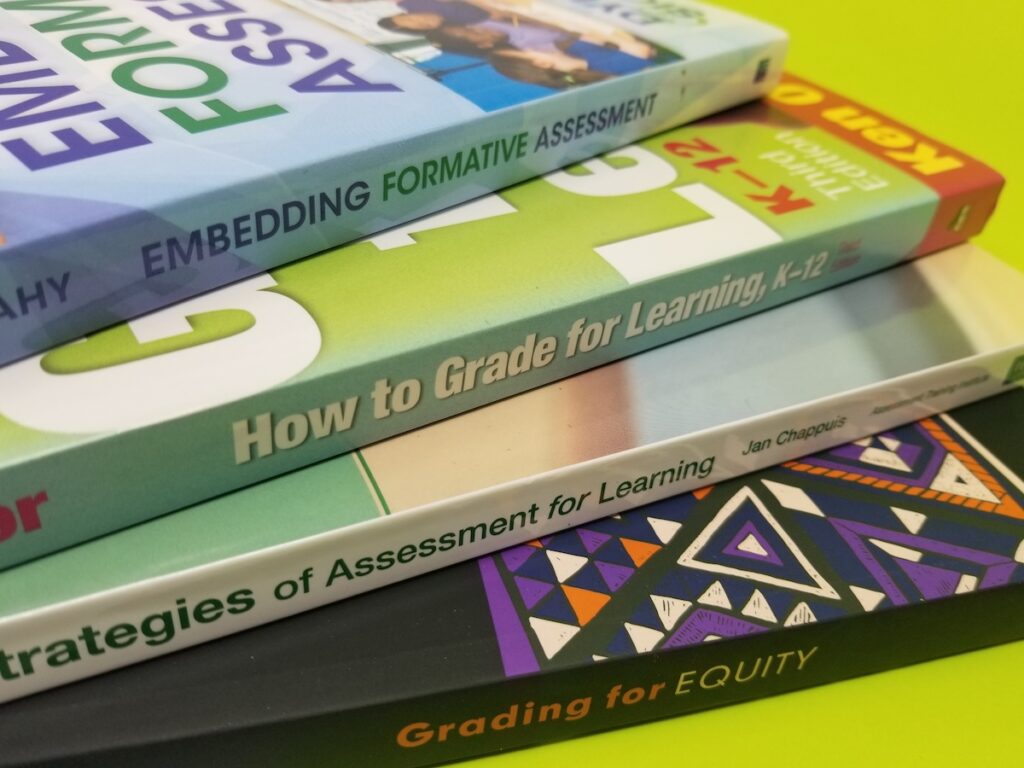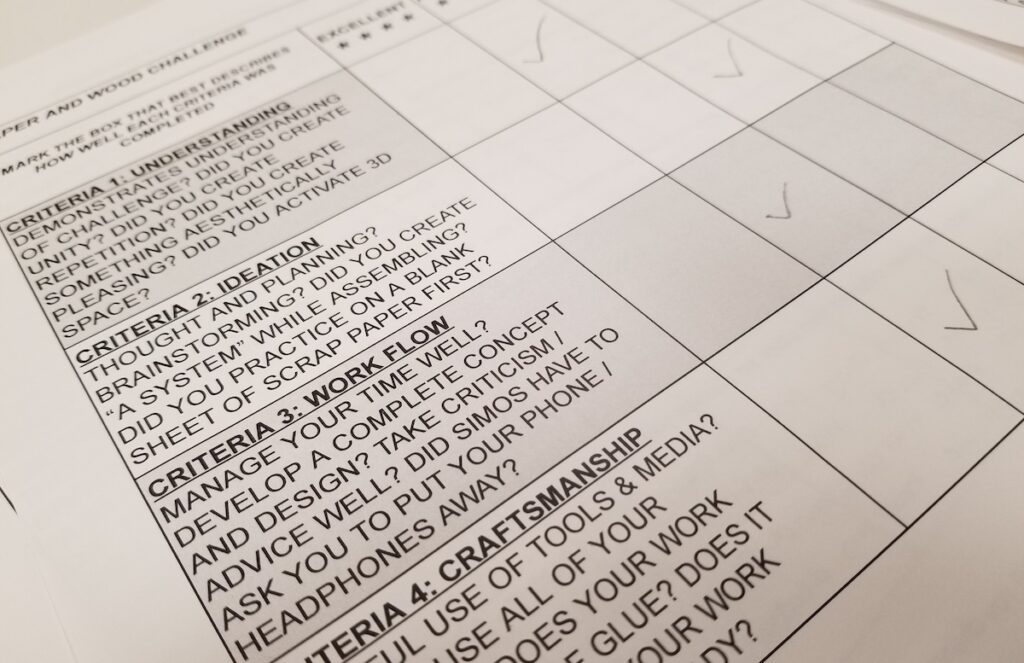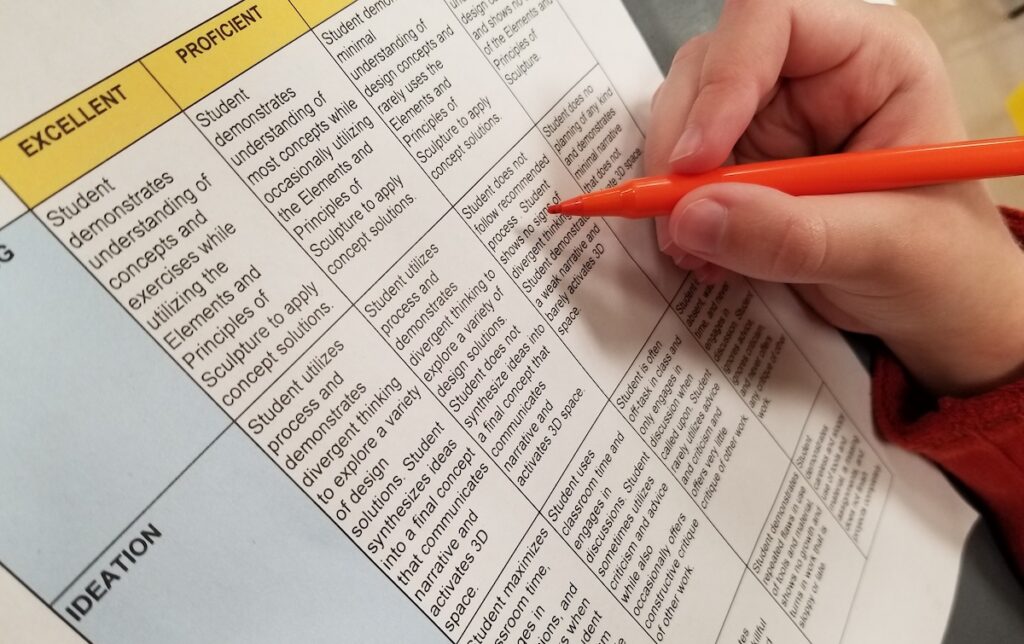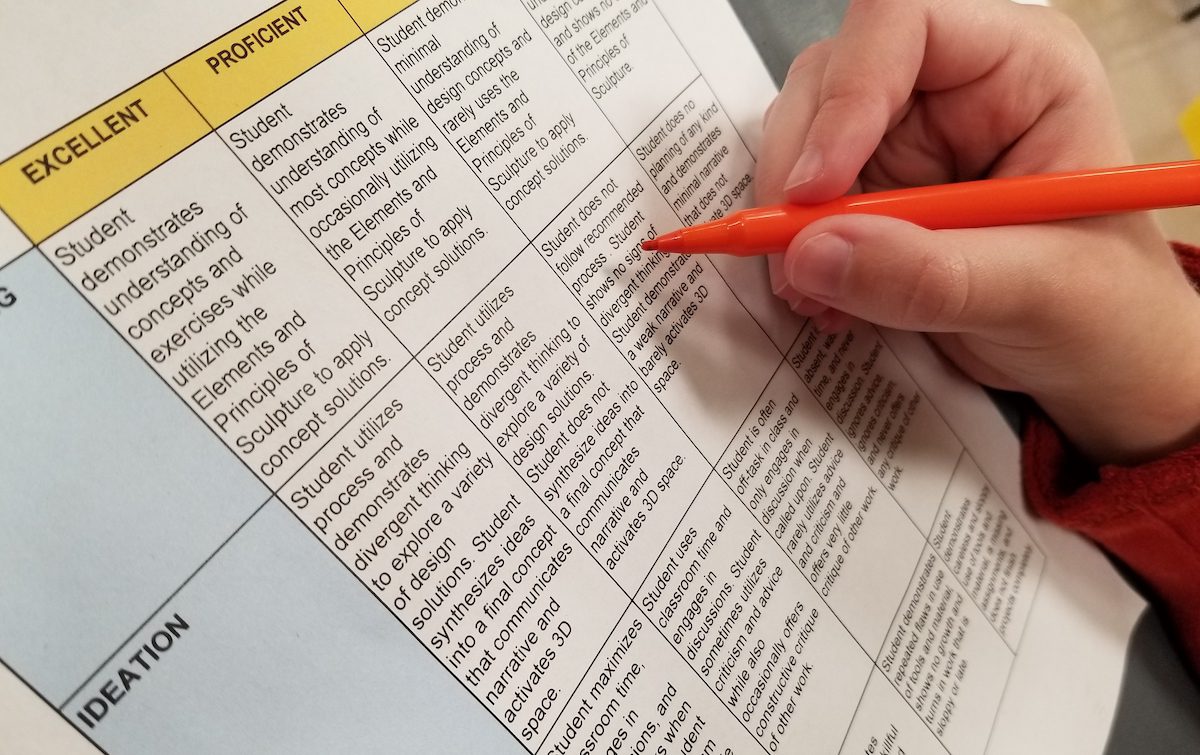Have you ever scored a student’s artwork on a rubric only to add up the points and disagree with the overall grade? So, you change your marks to calculate the grade you think they deserve. Sound familiar?
Designing effective rubrics is critical for assessing student work and providing useful feedback.

Rubrics can also communicate to students the next step in their growth, help set goals, and give you data on student performance. Before you abandon them entirely, try applying some of these helpful tips to bring quality assessment into your art room.
1. Identify your type
The first step is identifying which type of rubric is best for your students. Holistic rubrics give a single score and provide a general summary of the overall quality of the art piece. Analytical rubrics, however, divide the art piece into different criteria allowing you to score each one individually. Both tools can be effective but serve different purposes. Holistic rubrics can be quicker for the teacher, as you aren’t spending time adding things up and scoring multiple criteria. The scoring is also more manageable and easier to understand. Holistic rubrics should be used as final grading tools when the student cannot apply any of the feedback in the future. This is why the AP College Board uses a holistic rubric and score.
But, if you’re looking for more specific feedback for students or to help you better monitor student learning, analytical rubrics are more effective. This more commonly used structure allows students to more accurately identify where they were successful and where they need to grow. You also get a more objective perspective on how the class did as a whole to identify themes on how to adjust your instruction.
2. Look at your levels
When there is an odd number of options, our brain tends to settle in the middle. So, when you have an odd number of scoring levels, like Novice, Competent, Expert, you will often pick Competent when you waiver on the score. But if you have an even number, like Needs Development, Novice, Competent, Expert, it forces you to choose a value on the top or bottom half.

3. Make your criteria clear
It’s easy to start combining different criteria into one descriptor when a project is so involved. The problem, however, is feedback becomes less clear and effective for students. Consider the following descriptor as an example: Form is carefully planned, form is balanced. Edges are smooth, refined. Walls are even thickness. Joining is secure and hidden. What happens when the walls are joined securely, but uneven? Overall, your rubric needs to clearly identify how students performed on each of the criteria. If you can’t separate out criteria because it’s too cumbersome, develop a system to communicate partial success to a student. You could highlight or circle the specific areas students didn’t achieve, for example, and award partial credit for that row.
4. Separate the feedback
Every teacher experiences the frustration from a student searching their rubric for the grade and disregarding all of the feedback. Research also suggests when a grade is present, the feedback is less effective. Try separating the two by not including points or a grade on the document itself. What would be the impact if students had to review their rubric for feedback, giving time to internalize their performance, and then check the online grade book for their grade?
5. Make consistent connections
Rubrics can help students grow when the criteria extend beyond one project and show students many skills are reassessed in the next art piece. While it’s important to be specific in your rubric descriptors, try including a general subject like “Creativity,” “Craftsmanship,” or, “Technical Skill” with each rubric. Students can better track their progress when they see these on each project.

6. Self-reflect
You might grade it, but do you teach it? Students are often graded on several factors like creativity, technical skill, artistic behaviors, etc. However, are all of those directly taught in your classroom? If you are going to grade students on their idea, then you should be teaching lessons on how to develop original ideas that meet your standard. Similarly, if grading artistic behaviors is included, do students know what those mean and how to exhibit those behaviors?
Learn more
Don’t worry if all of this information is new. Art teachers have been through licensing programs, methodology courses, and art courses to be the best art teacher they can be. Designing assessment tools in the art room, however, seems to be missing from many educational programs. It’s like they assume we all just know how to write a good rubric. If you are interested in learning even more about assessment, check out AOEU’s course, Assessment in the Art Room. Hopefully, these tips now help you take your rubrics to the next level and impact student learning.
How can we help students better internalize feedback on rubrics?
How can we reconcile when a student does a great piece, but it doesn’t meet the criteria on the rubric?
Magazine articles and podcasts are opinions of professional education contributors and do not necessarily represent the position of the Art of Education University (AOEU) or its academic offerings. Contributors use terms in the way they are most often talked about in the scope of their educational experiences.





